Doing Tasks Again and Again Reciprocating
Reciprocating Saw Uses and Tips
Updated: Dec. 20, 2019
The ultimate remodeling tool—with attitude

Reciprocating saws make demolition easier and more fun. You can struggle and rip it out with a variety of crowbars and hacksaws or you can use a reciprocating saw and just cut it free. It's the ultimate demolition tool. Windows, walls, plumbing, doors and more—just cut and toss. Here's how to get the most out of your reciprocating saw.
You might also like: TBD
What is a reciprocating saw?
The reciprocating saw is a "gateway tool." It's the tool you'll own when you graduate to a serious DIYer tackling a repair or major remodeling. If you buy one these days, expect to pay from $100 to $300, depending on the brand and the features. Would you rather try a reciprocate saw out for a one-time repair? Go ahead and rent one, but you'll find that you'd rather have put the money toward buying one so you'll have it again later.
We'll show you a variety of uses for reciprocating saws, along with effective, safe ways to achieve professional results. A reciprocating saw isn't used as a fine crafting tool. It's a workhorse that gets its name from the short, back-and-forth cutting stroke of the blade. The blade is exposed so you can direct it into tight spaces. Because of this feature, you can use it in situations where other saws would be slow, impractical or pose a greater safety risk. Compared with a circular saw, a reciprocate saw is easier to control when you're cutting above your head or working from a ladder.
The best blade for the best job
By selecting the right blade, you're able to tackle different tasks.
- For cutting through metal pipes and nails, use a fine-tooth blade resembling a hacksaw.
- When cutting through wood, use a coarse blade.
- Use the coarsest-tooth blade to cut through plaster.
- Some blades are toothless. They're coated with tungsten carbide abrasive grit; use them for cutting stone, ceramic tile and cast iron.
You don't always have to be finicky about choosing a blade. Use a "nail-cutting" wood blade to slash through roof shingles and plywood as well as nail-embedded 2x4s.
Most of the blade types come in standard 6-in. lengths. Smaller jig-saw-type blades are available, or select a 12-in. blade—useful for reaching into deep recesses, cutting beefy landscape timbers and pruning trees.
Although tough, blades are not indestructible. They're disposable and should be changed as often as you sense that a dull blade is slowing the cutting. Bimetal blades, with "tool steel" teeth bonded to a flexing "spring steel" blade, cost slightly more than carbon steel blades but outperform them. They're tougher, cut faster and remain flexible longer.
If bent, blades can be hammered flat and reused. Even after the front teeth at the tip of your blade are worn down, you can still extend the blade's life with this simple trick. Wearing safety glasses, use tin snips to cut off the tip at an angle—thus presenting sharper teeth at the point of attack. Most manufacturers' blades can be used on most brands of recip saws. Verify this before you buy.
Additional tips
Using certain techniques will increase the saw's effectiveness.
- Applying proper pressure on the reciprocate saw is important. This is something that can be gained only through experience. It's a balance between bearing down on the tool in some situations vs. keeping a tight grip on the boot for control in others.
- Keep the saw's shoe tight on the surface of the material you're cutting. Doing so reduces vibration and increases cutting speed.
- If you use a rocking, up-and-down motion with the saw, the work definitely goes faster.
- Wonder how to get close enough to, say, cut nails behind lapped siding? Flip over the blade (teeth up) in the clamp assembly, then cut away. Avoid sawing into the siding.
Safety tips
Although recip saws are relatively safe, you must follow some rules.
- Anticipate problems when cutting into walls and floors where electrical wires, heating vents and plumbing pipes may be present. Be especially careful with finished walls and floors—don't cut through wires or pipes.
- Unplug the saw when changing blades and accessories.
- Always wear your safety glasses. Hearing protection is recommended when cutting metal.
- Recip saws are prone to "kickback." If the blade pulls out of a cut and the blade tip bangs into your material, it'll cause the saw to buck violently. This can happen suddenly and pitch you off balance. Remember this when working on ladders.
- When cutting through pipes or wood, the blade can bind and cause the saw to buck. It's like hand-sawing through a board that's not supported under the cut—the saw stops cold. With a recip saw, the blade may be stopped, but the tool (and you) keeps jerking back and forth.
- Blades generate plenty of heat. Just after making a cut, you can get a nasty burn grabbing the blade
to change it.
Required Tools for this Project
Have the necessary tools for this DIY project lined up before you start—you'll save time and frustration.
Originally Published: January 09, 2018
Source: https://www.familyhandyman.com/project/reciprocating-saw-uses/
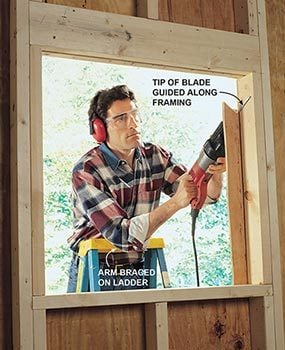

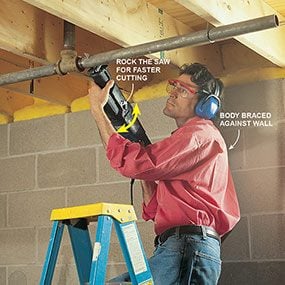
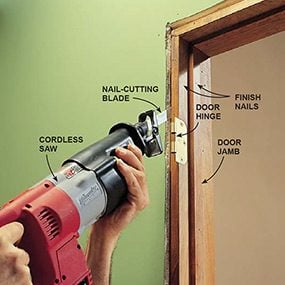
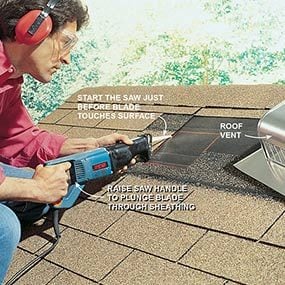
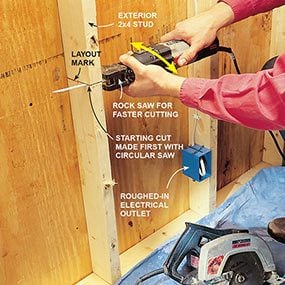
0 Response to "Doing Tasks Again and Again Reciprocating"
Publicar un comentario